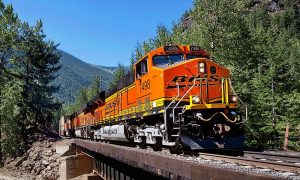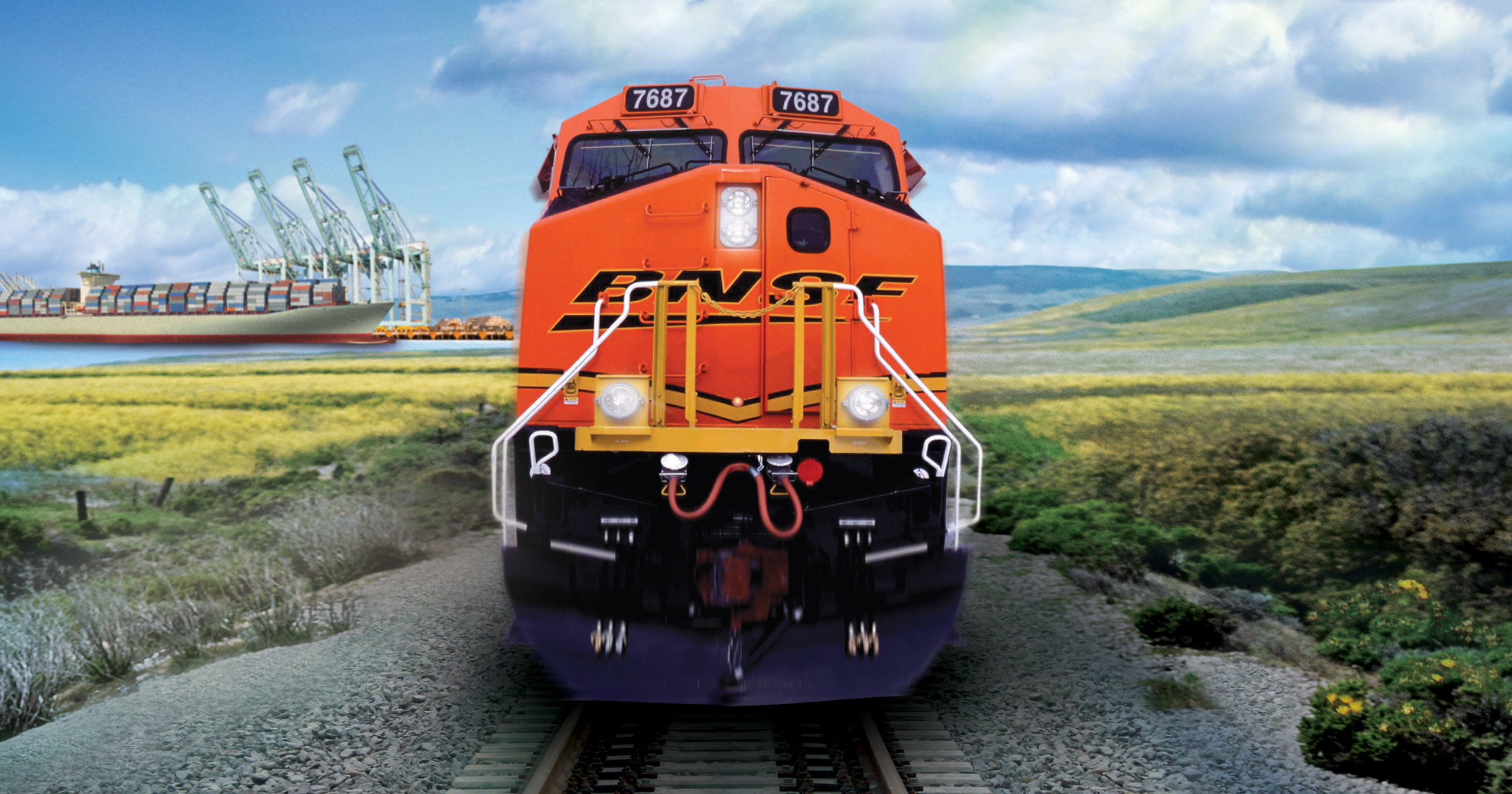
BNSF Intermodal Service
BNSF, a unit of Berskshire Hathaway, saw its intermodal service grow 4.2 percent last year to 3.8 million loads, according to Susquehanna Financial Group. Intermodal accounts for just over half the loads on its network.
Speaking at the Northeast Association of Rail Shippers conference, BNSF Vice President Tom Williams said e-commerce has been a “big tailwind’’ for intermodal.
“As larger e-commerce players build out distribution centers, they are able to use intermodal for their fulfillment centers,” Williams said. “We have seen strong intermodal growth from e-commerce.”
Truck Capacity Shortfall

More of that volume is coming from domestic 53-foot containers rather than marine containers, Williams said. Marine containers have accounted for a majority of intermodal freight over the previous five years. But year-to-date, domestic containers have accounted for more of the intermodal volume on BNSF’s network.
Enjoying our insights?
Subscribe to our newsletter to keep up with the latest industry trends and developments.
Stay Informed“We’ve seen domestic container grow more strongly and we’re seeing a more flattish trajectory on international freight,” Williams said.
With domestic container capacity tight, BNSF has seen a “huge percentage increase” in trailers traveling via intermodal as tight trucking capacity pushes more trailers onto rail, William said.
“As domestic container fleets are pretty-well utilized, we are seeing some excess growth coming from our trucking partners,” Williams said.
BNSF Under Pressure
But the shift to more domestic containers and trailer loads has put “isolated pressure” on BNSF’s network this year, Williams said.
Some of that pressure is evident in slowing speeds. BNSF’s average train speed for intermodal fell to a 2018 low of 30.8 miles per hour at the start of September. It has since returned to 32.1 miles per hour.
To be sure, other Western U.S. intermodal carriers such as Union Pacific have also seen intermodal service slow recently. Intermodal’s continued growth will require improving and sustaining train speeds, Williams said.
“We are not happy to see a slight downward trend,” Williams said. “We are proud to have good network velocity.”
Improving Network Velocity
BNSF aims to improve network velocity through $500 million in capital projects this year. It is adding track capacity at its Gallup, N.M., and Amarillo, Texas, subdivisions, which will allow higher speed intermodal trains to bypass other trains. It also expects to finish up a quadruple track project at its San Bernardino, Calif., center by October.
Included in that amount, BNSF is spending $90 million to add parking and lift equipment to its Alliance intermodal facility near Dallas-Fort Worth, new production track at its Hobart yard in Los Angeles and new track in Stockton, Calif.
BNSF is also testing automated straddle carriers from Finland’s Kalmar at its Kansas City intermodal yard for moving containers. The automated straddle carriers could be in place this year.
“We are positioning for growth and improving network velocity,” Williams said.
Drayage Capacity

Williams said 40,000 drivers are now using its RailPASS app, which automates the process of entering a BNSF facility. Further out, Williams said BNSF is looking at systems that can notify BNSF in advance of a truck’s arrival who the driver is, then automatically transfer that information to the railroad.
“Drayage is a very import ant leg of intermodal capacity,” Williams said. “We need to have right drayage capacity with our intermodal partners.






















